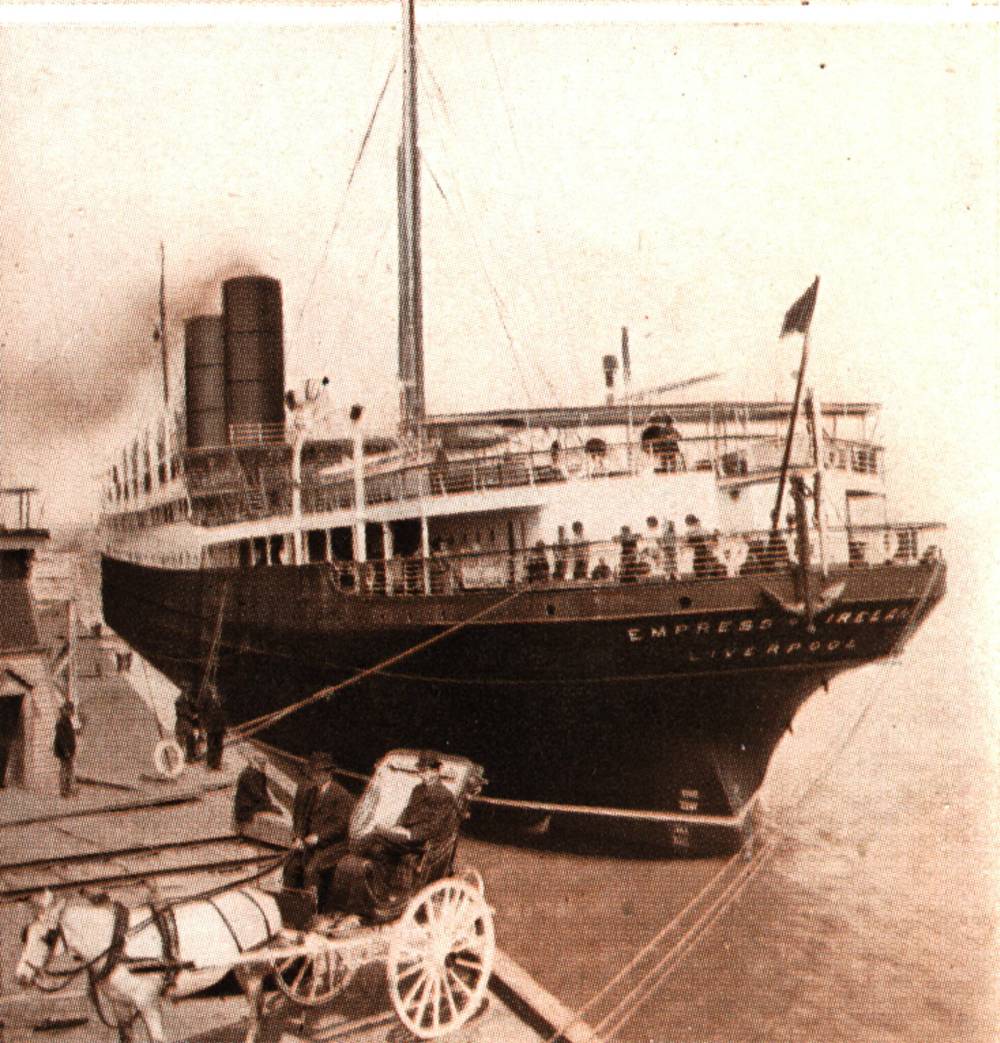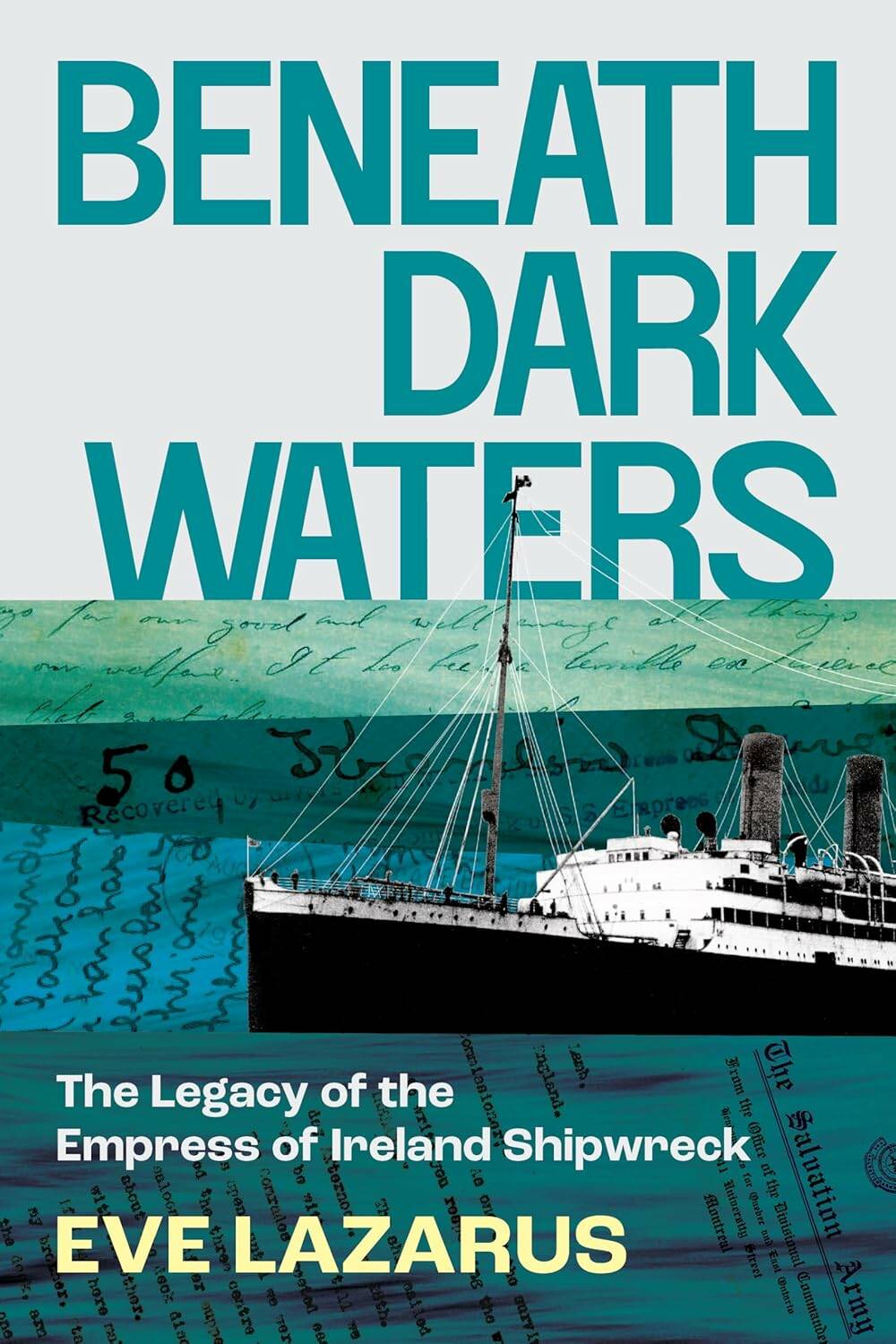Peril in the St. Lawrence
Fate of RMS Empress of Ireland a monumental — and often overlooked — maritime tragedy
Advertisement
Read this article for free:
or
Already have an account? Log in here »
To continue reading, please subscribe:
Monthly Digital Subscription
$1 per week for 24 weeks*
- Enjoy unlimited reading on winnipegfreepress.com
- Read the E-Edition, our digital replica newspaper
- Access News Break, our award-winning app
- Play interactive puzzles
*Billed as $4.00 plus GST every four weeks. After 24 weeks, price increases to the regular rate of $19.00 plus GST every four weeks. Offer available to new and qualified returning subscribers only. Cancel any time.
Monthly Digital Subscription
$4.75/week*
- Enjoy unlimited reading on winnipegfreepress.com
- Read the E-Edition, our digital replica newspaper
- Access News Break, our award-winning app
- Play interactive puzzles
*Billed as $19 plus GST every four weeks. Cancel any time.
To continue reading, please subscribe:
Add Winnipeg Free Press access to your Brandon Sun subscription for only
$1 for the first 4 weeks*
*$1 will be added to your next bill. After your 4 weeks access is complete your rate will increase by $0.00 a X percent off the regular rate.
Read unlimited articles for free today:
or
Already have an account? Log in here »
When it comes to maritime disasters, the “big” events spring to mind.
In 1912, the RMS Titanic gets eviscerated by an iceberg. Three years later, a wartime torpedo impales the RMS Lusitania. Both ships take hundreds of passengers and crew to watery graves in the North Atlantic and Irish Sea, respectively. In the ensuing decades, each ship is immortalized on screen and stage, in books and song. (Thank you, Celine Dion.)
But in Beneath Dark Waters: The Legacy of the Empress of Ireland Shipwreck, Vancouver-based investigative journalist and podcaster Eve Lazarus does a deep dive into a national maritime tragedy that rivals Titanic and Lusitania for “big event” status.

CANADIAN PRESS FILES
The RMS Empress of Ireland, owned by the Canadian Pacific Railway, sank in May 1914 in the St. Lawrence River.
On May 29, 1914, the RMS Empress of Ireland, owned by the Canadian Pacific Railway (CPR), was t-boned in dense fog by the SS Storstad, a Norwegian coal ship. Fourteen minutes after impact, the 170-metre long Empress plunged to the bottom of the St. Lawrence River. Only four of its 40 lifeboats were lowered; more than 1,000 passengers and crew drowned. This would have been the liner’s 192nd Atlantic crossing.
Today, the Empress of Ireland rests 45 metres (130 feet) below the river’s surface, and 8.3 kilometres (5 miles) offshore, near Rimouski, Que. Officially discovered in 1964, the wreck has long been an exploratory site for seasoned divers. In 2009, it received National Historic Site status; a modest museum and river buoy mark the worst peacetime maritime disaster in Canadian history.
So how come so few of us know so little about this story? In her 11th book, Lazarus, a self-professed lover of non-traditional history, explores why such a huge calamity has garnered so little attention, compared to its “big event” cousins. One reason, she writes, is because the Empress was a basic workhorse, whose main job was moving immigrants and mail between Canada and Europe. The Empress was well-travelled, shipboard luxuries were few and steerage-housed migrants were many.
The liner’s manifest supports this premise: there are no Astors or Guggenheims to be found on the Empress like there was on the Titanic. Rather, the Empress’ largest contingent among the 840 passengers was 170 Canadian Salvation Army personnel and their families, en route to a Liverpool conference. Also diverting public attention away from the sinking and its post-disaster inquiries was the assassination of the Austria’s Duke Ferdinand, which ignited the First World War in July 1914. It all adds up, she says.
To label Beneath Dark Waters “well-researched” is almost a misnomer. The tone of Lazarus’ newsy prose may not hook a reader like others in the shipwreck genre (think Erik Larson’s Dead Wake or David Grann’s The Wager). But Lazarus has gone one better, accessing private journals, photos and public reports, plus countless personal interviews with survivors’ families and site visits, to leave no informational stone unturned. It’s all packaged and delivered in her succinct writing style and approachable layout.

REBECCA BLISSETT PHOTO
Eve Lazarus
The result? A solid read for lovers of maritime mishaps.
Lazarus makes her case as to why the Empress of Ireland story resonates in 2025 and the imprint — the legacy — it has left on our national psyche. “The Empress sank in just 14 minutes, so not nearly enough time to make a motion picture about it,” she writes. “Mostly though, it was a Canadian story, and as Canadians, we like to bury the lede.”
GC Cabana-Coldwell is a Winnipeg-based freelance writer who loves maritime disasters and tries to never buy a lede.


